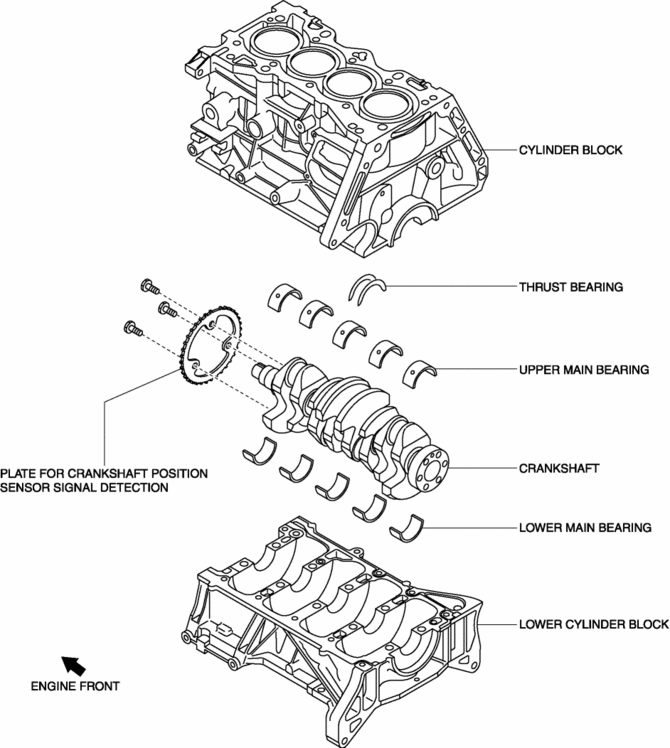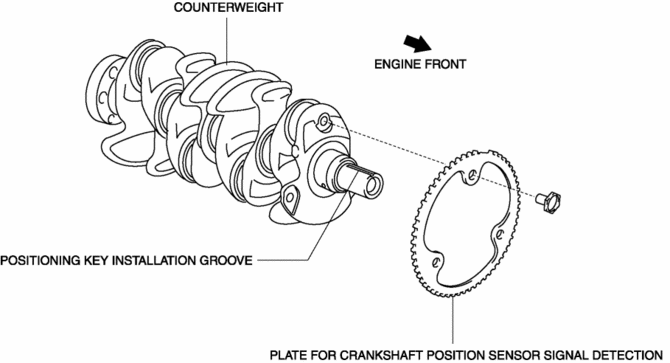Mazda CX-5 Service & Repair Manual: Crankshaft, Main Bearing
Purpose, Function
-
The crankshaft converts the reciprocating movement of the piston to a rotational movement via the connecting rod.
-
The main bearing forms an oil film on the outer surface of the crankshaft journal to prevent wear due to sliding.
Construction
Crankshaft
-
The crankshaft is installed to the inside (crankcase) of the cylinder block.

-
The crankshaft has a key groove to match timing to the crankshaft pulley.
-
The crankshaft has the following parts shown in the figure.

-
The optimized shaft diameter ratio of the crankshaft journal and crank pin has reduced sliding resistance while maintaining rigidity.
-
The steel crankshaft has five bearings and eight counterweights for improved accuracy in the rotational balance.
-
The crankshaft journal and crank pin have been induction hardened* to bear high loads.
-
The crankshaft has an oil passage for supplying engine oil to the crankshaft journal and crank pin.

Main bearing
-
The main bearing is installed to the outer surface of the crankshaft journal.
-
The upper main bearing and lower main bearing are made of aluminum alloy.
-
The upper main bearing has an oil groove and oil hole.
-
Thrust force is suppressed by the thrust bearings on both sides of the No.3 journal.

 Crankshaft Position (CKP) Sensor
Crankshaft Position (CKP) Sensor
Purpose/Function
Detects the crankshaft speed as basic information for mainly determining
the fuel injection timing and ignition timing.
Detects the crankshaft speed and inputs it to ...
 Motor Mounts
Motor Mounts
...
Other materials:
Generator [Skyactiv G 2.0]
Purpose, Function
The generator operates by obtaining drive force from the engine via the drive
belt and generates the required electricity for electronic devices.
Construction
The generator is installed on the engine left front side.
Output control is perfor ...
Heated Oxygen Sensor (HO2 S) Heater Control
Outline
Based on the control of the HO2S heater, a stabilized oxygen concentration
is detected even at low exhaust temperatures, and feedback control of fuel injection
even at cold engine start is made possible for improved cold temperature exhaust
emission performance.
Both ...
Adaptive Front Lighting System (Afs) Off Switch Inspection
1. Disconnect the negative battery cable..
2. Remove the switch panel..
3. Verify that the resistance between AFS OFF switches B and C is as indicated
in the table.
If the resistance can be verified as indicated in the table, go to the next
step.
If not as indicated ...
